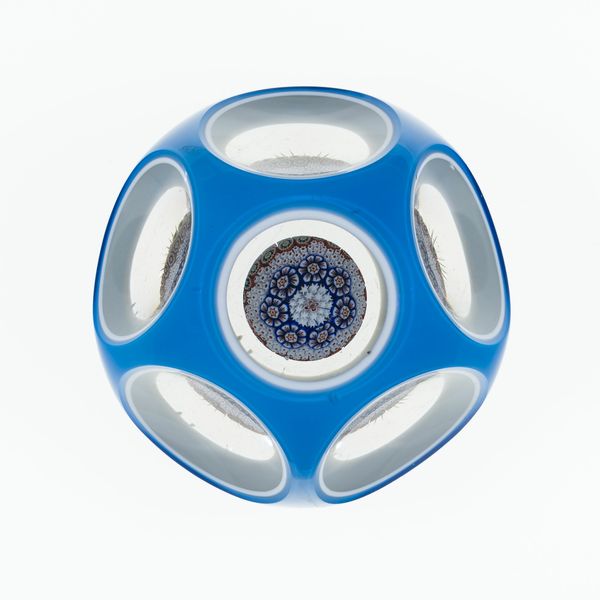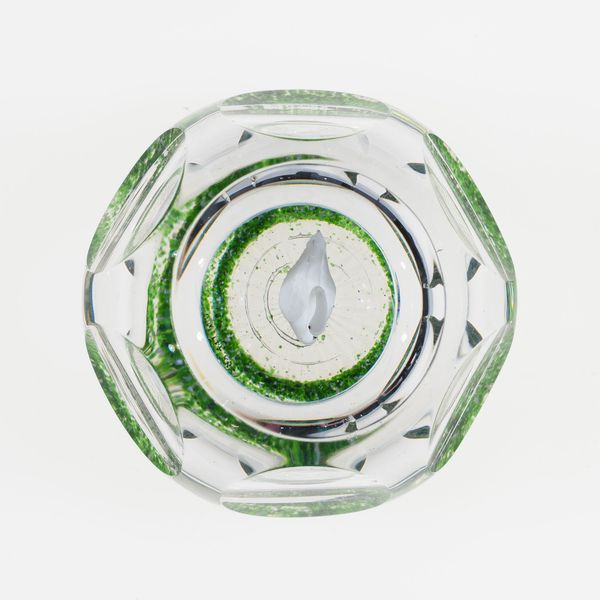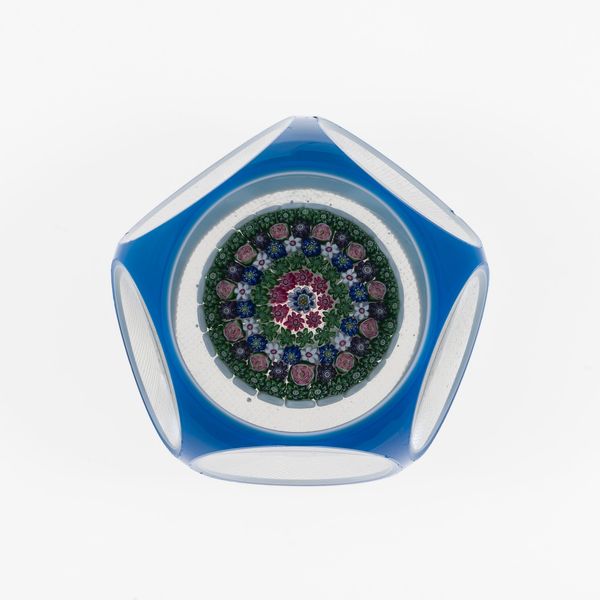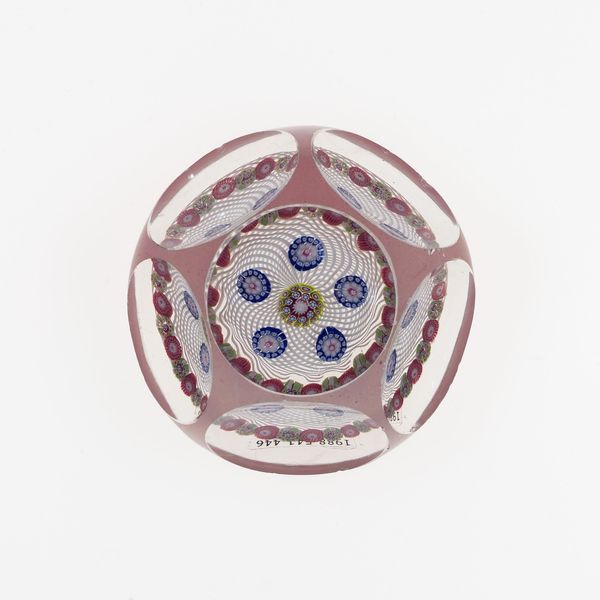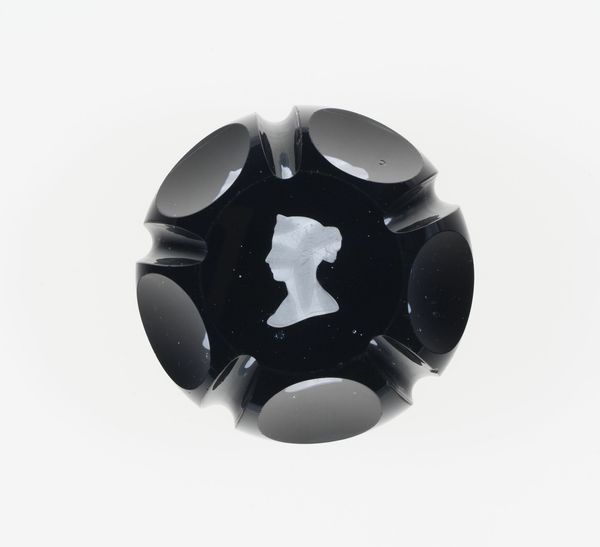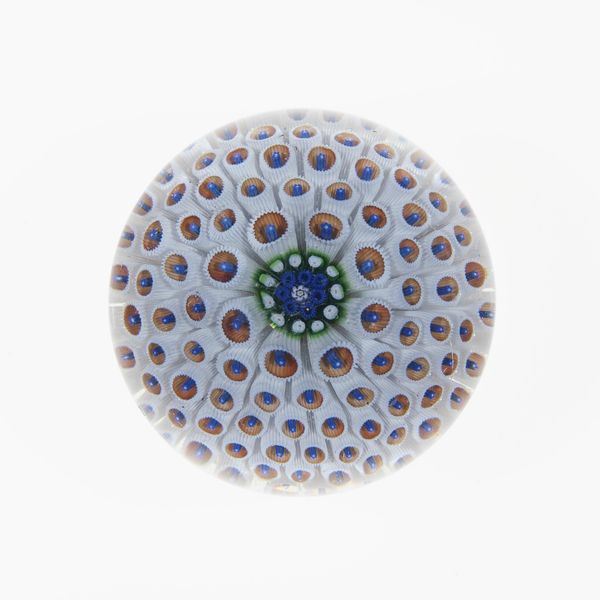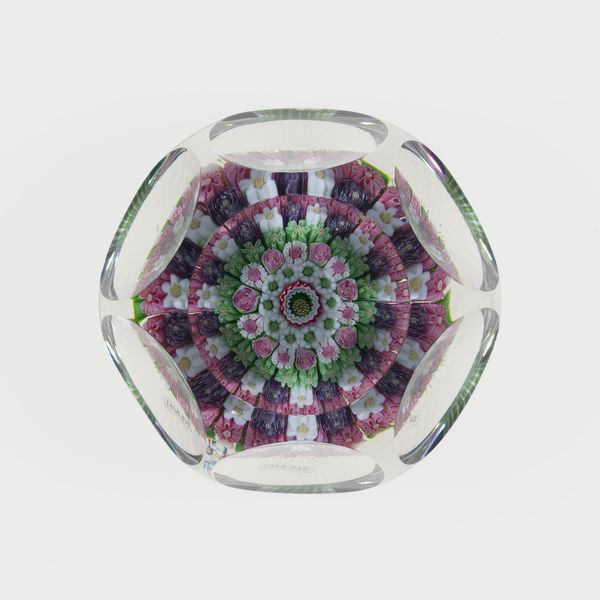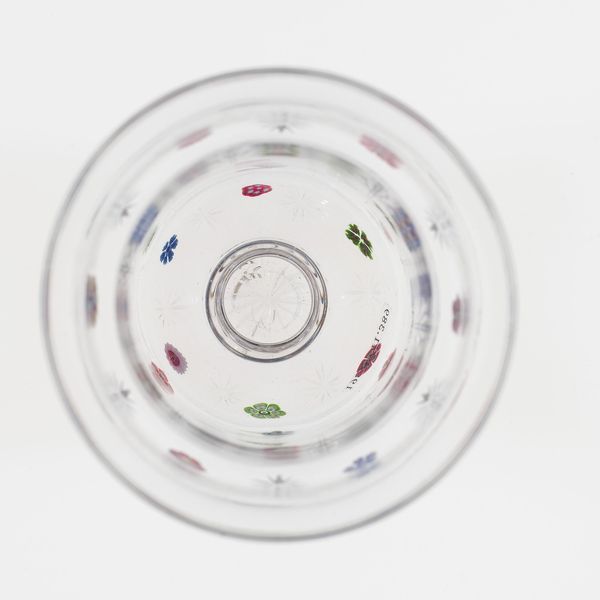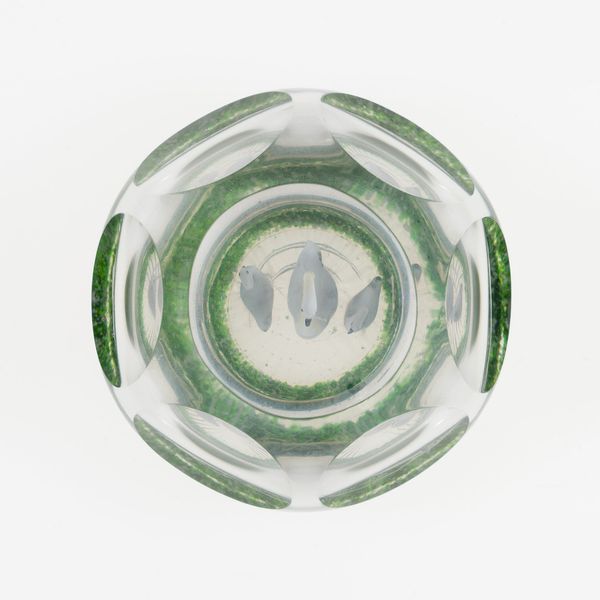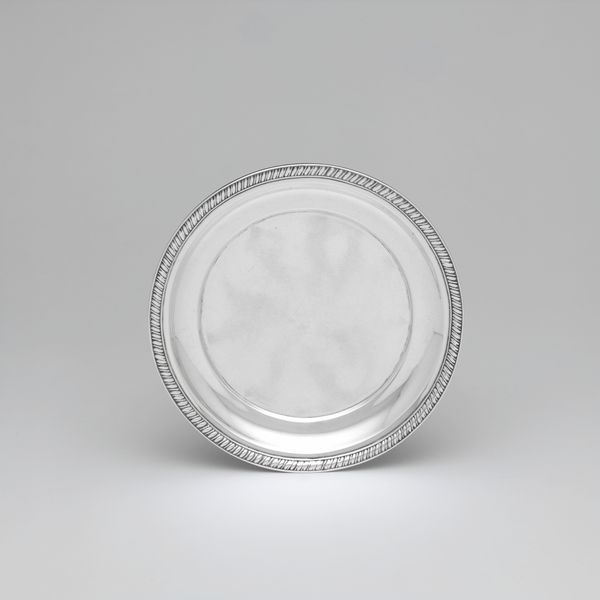
Dimensions: Diam. 7.3 cm (2 7/8 in.)
Copyright: Public Domain
Editor: Here we have the "Paperweight" from mid-19th century France, made by the Compagnie de Saint Louis, incorporating paper and glass. It's surprisingly captivating. The encased profile figure almost seems suspended. How should we understand this object? Curator: Let's look at it through the lens of material production and social context. This paperweight is not just decorative; it reflects a specific moment in industrial history. What can the materials themselves tell us about the social structures? Editor: So, the glass, obviously, represents a particular advancement. But the paper too, suggests more affordable practices and perhaps the desire for a wider audience beyond the elites. Curator: Precisely. And consider the image itself. It seems like an embossed silhouette. The act of embedding this image within the glass elevates it. This is where the lines between craft and fine art become blurred. What do you notice about its manufacturing, specifically its reproducibility? Editor: Now that you point that out, I can see the shape doesn’t lend itself easily to unique or bespoke artistic works. I guess its form facilitated simpler production runs and easier reproduction of copies. Curator: Exactly! These glass factories of the time were often structured around a strict division of labor. This kind of semi-automated approach brings questions to mind around labour, consumerism and commodification in 19th Century France. Editor: This gives me a lot to think about. It shifts my perspective away from purely aesthetics, encouraging questions of access and labor in artwork production. Curator: I agree. Examining materiality really can unravel how power operates through art and craft production.
Comments
No comments
Be the first to comment and join the conversation on the ultimate creative platform.
